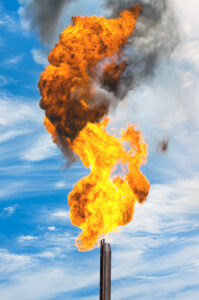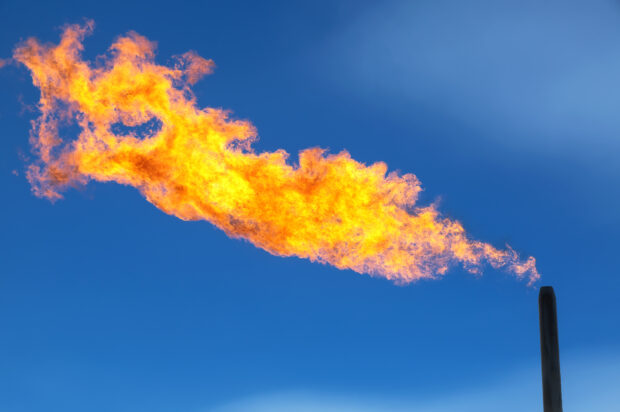Greenwashing lawsuits, while still relatively uncommon, have seen an uptick in recent years, with some alleging harm to consumers and others alleging harm to shareholders. Coca-Cola defended against two consumer suits alleging the company’s environmental statements were misleading to consumers given that Coca-Cola products contribute significantly to global plastic pollution. 7-Eleven also defended against a consumer lawsuit alleging that its product packaging was misleading: consumers took issue with labeling a product recyclable when in fact it may not be able to be recycled in jurisdictions the stores operate. Finally, Danimer Scientific is currently defending against an ongoing securities class action alleging it overstated its polymer product’s biodegradability, particularly when that product ended up in landfills and oceans.
Executive Summary
Both scientists and activists have begun labeling methane as the most important target in the climate fight. That’s because over the first decade or so in the atmosphere, methane is 85 times more powerful than CO2 at trapping heat, say executives from Praedicat and Geofinancial Analytics.Greenwashing with respect to climate change is an area ripe for securities lawsuits. Companies have made a point to improve their disclosures related to CO2 emissions and have also made net-zero commitments. But their ability to meet their emission targets is unclear, leaving many D&O underwriters concerned that widespread failure to meet them will lead to a wave of D&O claims. However, it will take several years before we know whether companies meet their goals. In the meantime, D&O underwriters might be worrying about the wrong greenhouse gas.
The short-term battle against global warming may be best fought over methane rather than CO2. That’s because over the first decade or so in the atmosphere, methane is 85 times more powerful than CO2 at trapping heat. The discrepancy is so large that both scientists and activists have begun labeling methane as the most important target in the climate fight. That means any corporate activity that increases methane emissions should be looked at as a potential litigation target, especially as media outlets like the New York Times continue to point out that “if gas leaks, even a little, it’s as bad as coal.”
There are many sources of methane in the atmosphere, but in the U.S., nearly half of escaped methane comes from the agricultural industry—primarily raising livestock—and a similar amount comes from energy production. Within the energy sector, most of the emissions come from oil and gas production.
The oil and gas producers’ enormous share of emissions alone isn’t enough to present a risk of greenwashing litigation, though. Oil and gas production companies are required to report their emissions to the EPA, and their responsibility to report has been governed, since 1995, by the “inventory method.” This obsolete methodology requires companies to provide an inventory of all the pumps, valves and fittings at each facility and apply an EPA-specified “leak rate” for each piece of equipment. This approach has major limitations from a scientific perspective since it’s been shown that the inventory method underestimates methane leakage by as much as eightfold or more when compared to direct observations of methane emissions.

Furthermore, the inventory method is susceptible to gaming. Bloomberg recently reported the case of a Pennsylvania energy producerthat reported a 93 percent reduction in methane emissions. A key factor in that reduction was a change in how they computed emissions under the inventory approach. Previously, like most producers, this firm assumed that the equipment in its inventory operated 24 hours per day. But in 2022 they changed that assumption on their 11,610 intermittent-bleed pneumatic devices—which use pressure to open and close valves—from 24 hours to just 8 minutes per day. That decision, also employed by other firms, contributed significantly to the reported reduction in emissions while obviously having no effect on the true emission rate.
The scientific realization that the inventory method has severe shortcomings led the U.S. Congress, as part of the Inflation Reduction Act, to mandate that energy producers directly measure their methane emissions when completing their statutory reports to the EPA. Furthermore, energy companies will be subject to per-tonne fines if their emissions over the year exceed a specified level. The fine will be $900 per tonne in 2024, $1200 per tonne in 2025, and $1500 per tonne in 2026 and later.
Under the inventory method, these fines would likely only apply to a small number of companies. However, new measurement techniques, including the ability to detect methane from space, are transforming our understanding of the emissions landscape and giving investors and regulators access to independent information about methane sources, emission rates and the responsibility of parties to address those emissions—including their potential liability for fines from the federal government.
The fines are, at least in some cases, quite large. We’ve estimated that over the first three years of fines, some of the largest producers could be liable for as much as $4.8 billion—amounts that could lead the stock market to reassess the long-term prospects for a company’s value, causing a significant stock drop. Furthermore, some of these companies report emissions today that would lead to fines that are only a tiny fraction of the estimated amount using independent and direct observation methods via satellite. As investors realize the company may be knowingly underreporting its methane releases, it wouldn’t be a leap to imagine them filing a lawsuit against the company and its directors and officers for failing to adequately disclose this material information.
According to satellite observations, nearly every top 100 oil and gas producer currently underestimates their methane emissions, and this systematic misreporting has the potential to turn into a large D&O insurance event.
Companies and their insurers have another reason to be cautious with respect to methane emissions: Many investors already have taken note of the inadequacies of methane measurement. Shareholders of major oil and gas distribution companies increasingly have voted to support resolutions asking the company to provide more detailed information regarding its methane emissions. Last year, shareholders of Chevron passed a resolution to this effect. This May, 36 percent of shareholders of Exxon Mobil voted in favor of a proposal asking the company to provide more detail about the reliability of its measurement of methane emissions.
Investors are also anticipating that the Securities and Exchange Commission will soon require companies to include certain climate-related disclosures in their registration statements and periodic reports. Following enactment of the SEC’s proposed rules, oil and gas companies will need to specifically address methane emissions in disclosures to shareholders and other potential investors.
The increased transparency of methane emissions and the fact that satellite observations show methane emissions intensity is increasing rather than decreasing raises the risk that shareholder actions may be filed to force companies to behave more responsibly. Underwriters should prioritize writing companies that take proactive steps now to reduce these risks by fully understanding their emission profile and taking immediate steps to reduce emissions intensity for real—rather than using accounting tricks like saying a valve operates for only 8 minutes per day.




















 Reserve Strengthening for Casualty Lines Not Over: Moody’s
Reserve Strengthening for Casualty Lines Not Over: Moody’s  Auto Insurance Price Inflation Overstated, Swiss Re Economists Say
Auto Insurance Price Inflation Overstated, Swiss Re Economists Say  The Top 15 U.S. Metros with High Exposure to Wildfire Risk
The Top 15 U.S. Metros with High Exposure to Wildfire Risk  Triple-I: Slowdown in U.S. P/C Replacement Costs Likely Short-Lived
Triple-I: Slowdown in U.S. P/C Replacement Costs Likely Short-Lived 





